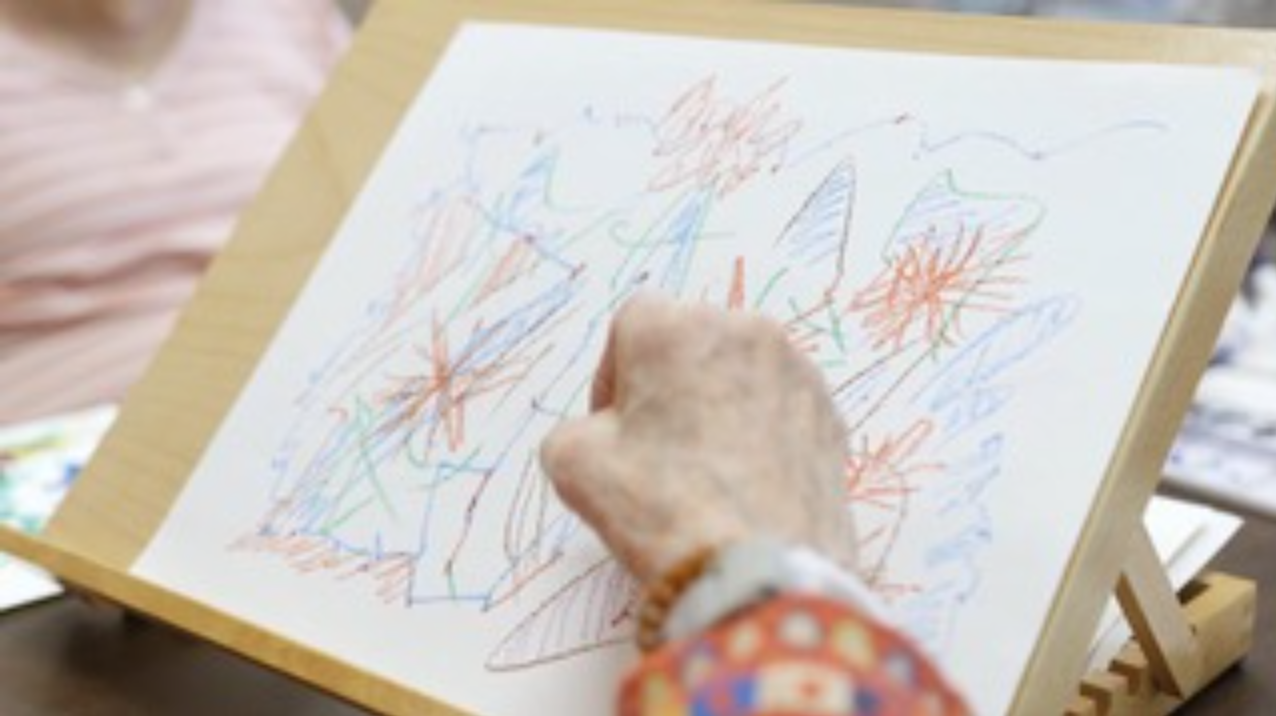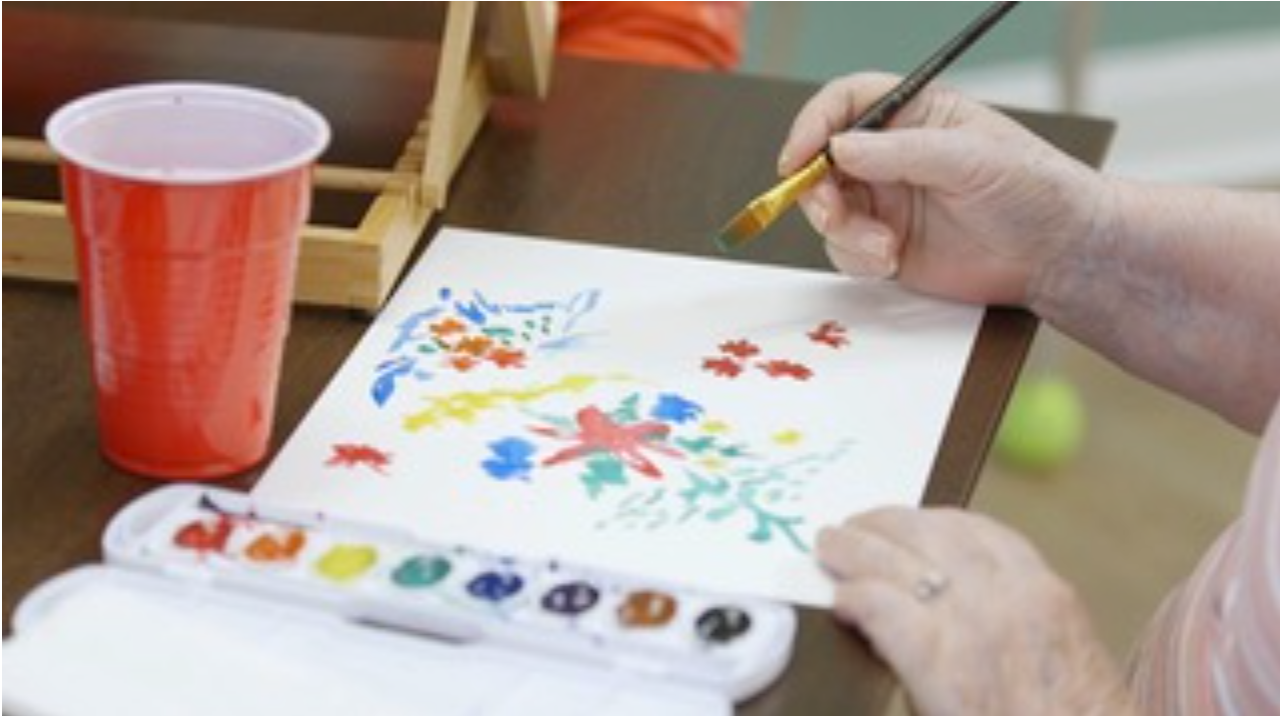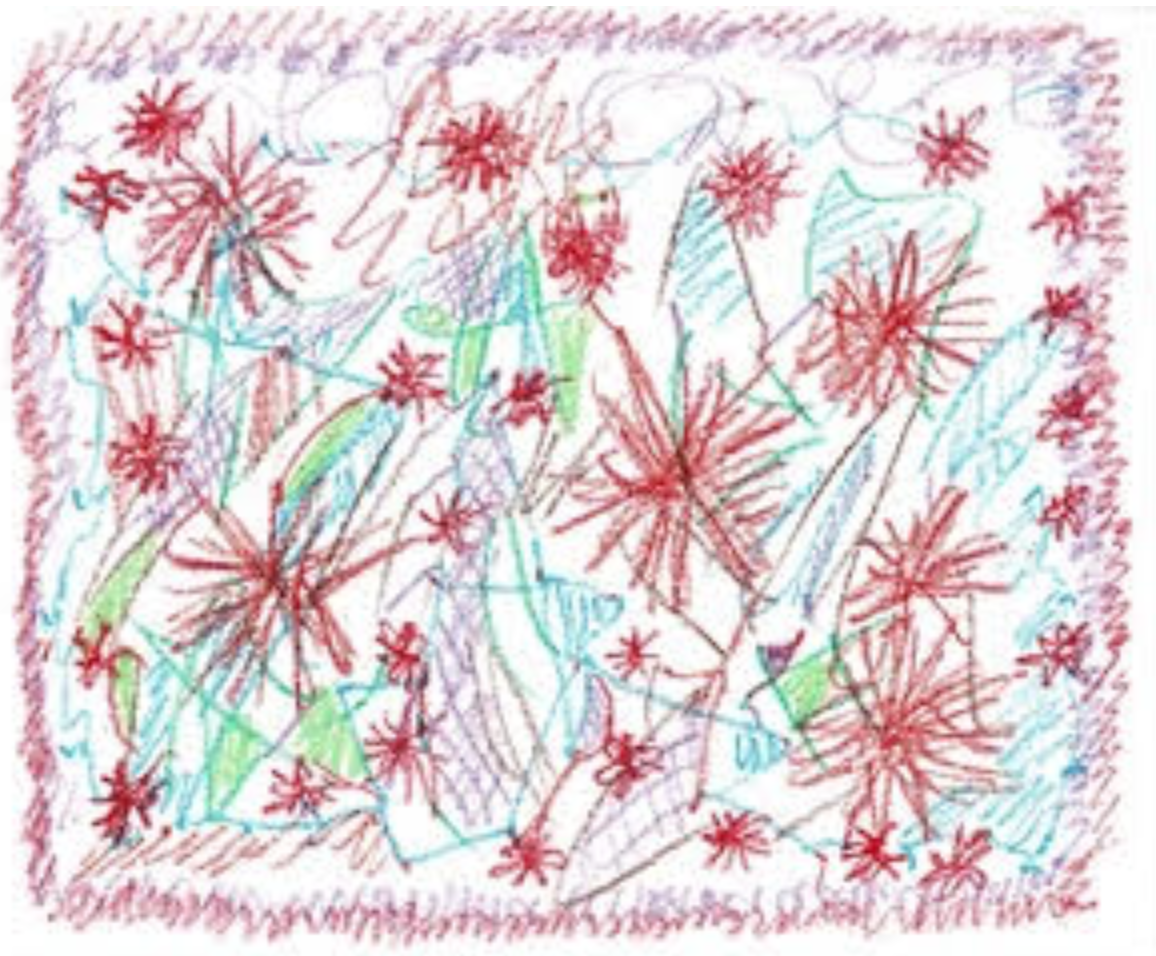May 1, 2023 | By Sivan Perdue, MS, ATR-BC, LCPAT
“No, I don’t draw.” Ms E said to me as I invited her to join us at the table, in a sunny day room of her assisted living facility, for an open art session. I gently introduced her to some oil pastels and put materials in front of her, leaving it to be her decision if she wanted to engage.
While working with another group member, out of the corner of my eye I saw her eyeing the oil pastels and then picking one up. Slowly, hesitantly, she started making marks on the paper. Quietly, she filled up one piece of paper and I provided her with a clean sheet. Each drawing became more detailed and began to fill the entire paper. By the end of our session she had to be gently stopped as she was so engrossed in her piece, she did not want to stop. Despite claiming that she “did not draw” once provided the opportunity, Ms. E could not stop drawing. Her family was shocked as she did not often engage in programming.
What do you picture when you hear the term “elderly person”?
What do you picture when you hear the term “elderly person”? Depending on the culture and the elders you had in your life growing up, this can look very different for people. Many of us in American society often imagine older women sitting in rocking chairs drinking lemonade, a grandmother cooking, grandfather whittling wood, or for some, having to put individuals in nursing homes. Older individuals may be seen only as a list of the physical complaints and body changes that occur with aging. Mental health may not be considered and depression is assumed to be part of aging rather than something that can be treated. In the US, older adults are an often underserved and overlooked population when it comes to mental health care. Working with older adults makes us face the sometimes uncomfortable truth of our own aging process and mortality. In American culture, we even begin to question the benefit of offering such care to folks who we feel are near the end of their lives.
Four Reasons Art Therapy Works for Older Adults
During the month of May, as the National Older Adult Month, I thought this would be a great opportunity to share the benefits of art therapy as mental health care for this population. Here are 4 reasons art therapy is a great intervention for older adults.
#1 Creativity can increase self-awareness and promote healthy grieving
Art and creativity can help to maintain cognitive abilities. It can assist in creating and strengthening new associations and reinforce connections and memories that are already present which can allow individuals to work through and process life events.
#2 Art provides opportunities to voice and express life experiences, especially when words fail
Art with older adults provides opportunities to express inner experiences in a visual and contained way. This fosters and introduces healthy outlets and coping skills as well as providing a sense of mastery and accomplishment. This type of meaningful expression may not be possible verbally for some older adults due to illnesses such as Parkinson’s disease, other forms of dementia, and aphasia due to stroke.
#3 Older individuals may be more open to trying new things
One thing I love about working with older adults is their willingness to try new things. They tend to be less worried about “looking stupid” and will often engage in new experiences with an open mind and to try something new. Older adults have often developed a wonderful sense of humor and are able to not take themselves too seriously. This dovetails well into process focused groups that allow everyone to be on an even footing despite previous experience.



(Above) Photos of the clients actually working on their artwork.
#4 Art creates opportunities to focus on abilities and build on strengths
Older adults experience a number of losses as a natural part of aging. These can be physical or emotional, but Art therapy can easily be adapted to highlight the strengths and abilities of an individual which allows them to continue to participate even when there are physical or cognitive limitations. Instructions and physical environment may need to be adapted in order to meet the client where they are, but in my experience there is often a willingness to to engage despite disabilities and can be empowering to clients when you are able to adapt materials so they can continue to engage.
Many individuals need to feel productive and have a sense of purpose as they age. Art therapists have an unique opportunity to support this population by honoring and recording their experiences and providing them with a means of expression and exploration of unique life lived and to amplify a voice and experience that is often undervalued.

Untitled,. Ms. E
Oil pastel on paper


About Sivan Perdue, MS, ATR-BC, LCPAT

Sivan Perdue is a registered board-certified art therapist and a licensed clinical professional art therapist in Maryland and Delaware. Sivan obtained her bachelor’s degree in studio art from Nazareth College of Rochester and her master’s degree in art therapy from Nazareth as well.
Sivan is currently in private practice at Perdue Art Therapy working with individuals living with dementia and facilitates a support program for women who are caring for their partners living with dementia. Sivan is also certified in Dementia and Sexual Health and provides consultation to facilities in creating sexual health and identifying affirming environments and policies to support and protect both residents and the people who care for them.
